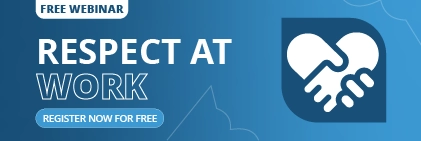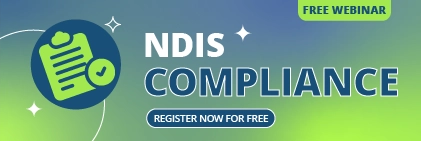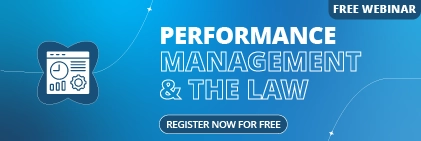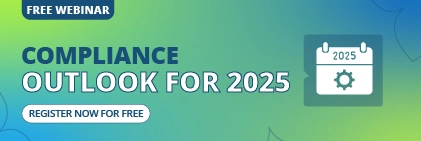Managing human resources can feel overwhelming for small businesses in Australia, especially when time and resources are tight. That’s where human resources software comes in. This powerful tool simplifies HR tasks, ensures compliance with local laws, and boosts employee engagement. With so many options, it begs the question: How do you pick the right one?
In this guide, we’ll walk you through what human resources software solutions are, why you need them and their key features. Whether you aim to streamline payroll, enhance onboarding, or improve employee satisfaction, you’ll find practical insights here. We’ll dive deep into top players like Sentrient, share implementation tips, and highlight trends to watch for in the future. Let’s dive in!
What is HR Software?
HR or human resources software is a digital platform that automates and manages HR tasks. It handles everything from payroll and employee data to recruitment and performance tracking. For small businesses in Australia, it’s a lifeline. Saving time and ensuring compliance with laws like the Fair Work Act takes a load off any business owner’s back, letting them focus on day-to-day operations and future planning.
There are three main types of HR software solutions:
- HRIS (Human Resource Information System): This system stores employee data, such as contact details and contracts.
- HRMS (Human Resource Management System): Adds tools for hiring, training, and more to HRIS features.
- HCM (Human Capital Management): Offers strategic solutions like workforce planning and analytics.
A small business might start with an HRIS solution and scale up. Take Sentrient, a great tool perfectly designed for small to medium-sized enterprises. It’s flexible enough to grow with you as your company expands into a larger, more corporate-style business. Here’s a unique angle: Beyond HR workflow automation, this great HR software improves workplace culture by empowering employees with self-service tools, making them feel valued and heard.
Why Small Businesses in Australia Need HR Software
Running a small business in Australia comes with challenges. Australia has strict regulations on various industries, and a varied workforce and tight budgets may exacerbate problems. HR software tackles these head-on through a range of strategies.
Human resources software can automate several tedious aspects of HR, including payroll, leave requests, and onboarding. Furthermore, businesses use HR software to ensure compliance. This keeps you and your team aligned with Australian laws, avoiding fines. HR software is also known to boost engagement. It offers employees easy access to their data, building trust within your business and with your clients and customers.
Think of a cafe, for example, being able to cut payroll time in half with HR software for small businesses. Employees get accurate payslips and super contributions on time – who wouldn’t be happy about that? HR software isn’t just about efficiency; it’s a growth tool. Data insights help you plan for new hires and training, giving your business a strategic edge. Each advancement is crucial to shaping your business’s prospects in today’s highly competitive job market.
Key Features to Look for in HR Software
Choosing the right HR software means focusing on features that match your needs. Here’s what to prioritise, what to watch for, and what you shouldn’t leave without.
- Payroll management: Payroll management is essential for businesses of all sizes. Every company looking for HR software has employees, and payroll is known to be a headache in Australia. You’ll need a reputable vendor that can handle taxes and superannuation payments. Retail and hospitality companies should ensure that the software can adjust for penalty rates seamlessly.
- Employee self-service: Employee self-service is a prominent feature that tends to fly under the radar. Let staff manage their information and requests; you’ll see their satisfaction increase. Recruitment and onboarding are also significant. Using HR software to simplify hiring and onboarding will free up your HR team’s time. This lets them dedicate more of their day to working on broader business strategy rather than coordinating tedious, repetitive interviews and training sessions.
- Employee Performance Management: Performance management tracks goals and reviews. A strong employee performance management system sets your business apart, allowing you to use reporting and analytics to benefit the company. The ability to turn data into decisions is grossly understated and is increasingly essential in this modern data-driven world.
Sentrient is fantastic here, offering all these options in one package. For example, a retail shop could use a self-service portal to reduce management’s workload. Don’t just look at flashy features designed to lure you in—prioritise usability for your business. If you aren’t going to use a feature, then you shouldn’t spend your money on it. A clunky system wastes time, while an intuitive design elevates your team.
Top HR Software Options for Small Businesses in Australia
Here are a few of the most popular HR software solutions for Australian small businesses:
- Sentrient: A user-friendly all-in-one with payroll, compliance, and engagement tools. Affordable and scalable, it’s perfect for small businesses that see themselves expanding to medium-sized over the next few years.
- ELMO Software: Cloud-based, with HR, payroll, and recruitment modules.
- Employment Hero: Strong on compliance and benefits.
A small tech firm might pick Sentrient for its simplicity, while a retailer with hourly staff might lean towards Sentrient for its easy payroll management system and focused compliance system. Look beyond the price tag and factor in long-term costs like training and support. Sentrient’s value is unmatched here.
Comparing the Best HR Software
Let’s break it down:
- Pricing: Sentrient offers flexible plans based on staff size. It’s transparent and budget-friendly, perfect for small businesses that don’t have the vast resources of large corporations.
- Scalability: Can it grow with you? You should consider your business’s future and how much more support or services you’ll need to become the best in your industry.
- User Reviews: Sentrient scores high for support with its Australian support team and free training webinars. With all the support options offered, businesses using its services can always get help when needed.
A startup might choose Sentrient for its scalability, saving headaches as they expand. Despite this, it’s always best to test it yourself. Demos reveal far more than reviews. A trial can show if the software fits your workflow. Use the free demo to test every aspect of your software and take advantage of Australian human resources software.
How to Choose the Right HR Software for Your Business
Picking the perfect HR management system for small to medium enterprises (SMEs) involves a few key details that should be top of mind:
- Assess your specific needs: List your priorities from most to least important and focus on the central issues first. Ignore features that don’t help your business.
- Budget and scale: Find value for your business and carefully manage your growth and future expectations so you won’t be caught off guard.
- Support and training: Look for responsive help and resources, ideally from Australian vendors who understand our specific laws, regulations, and requirements.
Get your team involved. Their buy-in ensures the tool gets used to its fullest potential. If your team aren’t using the software, then you need to ask yourself if you should spend money on a human resources software solution in the first place.
Implementing HR Software: Best Practices
Preparation is key when implementing and integrating HR software into your business. Set goals and clean up your data so you have a clear plan of action once the system has been installed. Teach your team with vendor training tools and ensure managers are adequately trained to deal with any unexpected scenarios. Monitoring the use of the software post-rollout is also essential. Check usage and tweak as needed. Compare your KPIs before and after you implemented the software.
Start small and roll out core features first. It keeps things smooth and builds confidence.
Common Challenges and How to Overcome Them
Employee resistance is always to be expected. After all, it’s only natural that change is often disliked in the workplace. Show your staff the benefits of the software, such as less paperwork to deal with.
Data migration can be tough, especially if you’re moving from one software solution to another. Check with your vendor to see if they can handle your data migration. This is also a great time to clear your databases of unnecessary data.
Compliance is also essential for your company. Pick software with built-in Australian law updates. Plan for change and remember that training and clear communication are key.
Future Trends in HR Software
Stay ahead with these trends:
- AI and Automation: Smarter hiring and analytics.
- Remote Work Support: Tools for hybrid teams.
- Wellness Features: Focus on mental health.
Sentrient’s already embracing AI and remote tools. A small firm could use these to attract and retain the best talent in the business. Think with a long-term perspective. Software that adapts to trends like wellness keeps you competitive, and in a market as turbulent as today’s, every edge is vital for your business.
Quick Takeaways
- Human resources software saves time, ensures compliance, and lifts engagement.
- Must-have features: payroll, employee self-service, and analytics.
- Sentrient leads with affordability and scalability.
- Assess needs and test software before buying.
- Plan implementation and train your team.
- Watch trends like AI and wellness.
Conclusion
Finding the best HR software for your small business in Australia can transform how you work. It’s about more than automation or ease of use. It’s about empowering your team and growing smarter alongside them. You’ll land the right choice by weighing features, costs, and support. Sentrient stands out for its all-in-one design, compliance focus, and scalability. This makes it perfect for small businesses aiming high. It’s user-friendly and backed by top-notch support, making it our top pick.
Ready to simplify your HR workload?
Check out Sentrient, request a demo, and see the difference. The right HR software for small businesses sets you up for success now and into the future.
FAQ’s
1. What’s the best HR software for small businesses in Australia?
Sentrient tops the list with its all-in-one features, scalability, and Australian compliance tools. While other vendors may offer similar features, Sentrient bundles everything up seamlessly and is a reliable local vendor.
2. How much does HR software cost in Australia?
Costs vary, but look for vendors that offer affordable, flexible pricing tailored to your employee count. Dynamic pricing is essential when shopping around for software, especially for small businesses.
3. Can HR software ensure compliance in Australia?
Solutions often include features to stay compliant with laws like the Fair Work Act. Some advanced solutions can even automatically adjust for new legislation as it is introduced.
4. Is HR software good for remote teams?
Several large vendors undoubtedly support remote work with tools for collaboration and self-service. Remote teams are essential to businesses nowadays, and supporting them is crucial for future business growth.
5. What features should I prioritise in HR software?
Look for payroll integration, employee self-service, and reporting. Sentrient covers them all, including tough ones like penalty rates in your payroll system.
6. How do I implement HR software successfully?
Plan well, train staff, and optimise usage. Talk to your team and get them on board. If your employees aren’t enthused about the software, it’s likely to fail. With the right preparation, this is easily avoidable.
7. Can HR software boost employee engagement?
Yes, self-service portals and performance tools in Sentrient keep staff connected. Goal-setting tools and other great features also help motivate your employees and keep them engaged with their day-to-day work.
8. What’s excellent about cloud-based HR software?
It’s accessible and scalable. Software that can handle these things is perfect for small businesses.
9. How does HR software handle payroll?
It automates taxes and superannuation payments. This ensures accuracy for Australian payroll needs.
10. What HR software trends should I watch for?
AI, remote support, and wellness features are rising. Mental health is key in modern-day businesses; staying on top of these things can never hurt.
Read More About HR Management:
- The Top 10 Human Capital Management Systems (HCM) In Australia
- The Top 10 Human Resource Management Information Systems (HRIS) In Australia
- Top 5 HR Software in Australia: An In-Depth Review
- Common HR Mistakes Australian Employers Make Due to Not Having the Right Software
- Affordable HR Solutions for Australian Startups with Under 20 Staff





